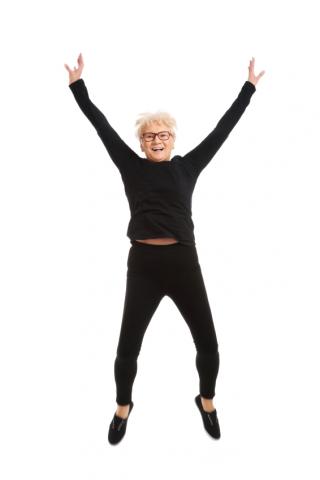
I have written before about sarcopenia which I see as an increasing problem among folks as we age, seriously impacting quality of life when it becomes significant. We naturally lose muscle bulk (and effectiveness) as we age, a loss that leads to wobbly walks, unsteady standing, and general frailty. Nothing makes someone feel or look older than frailty. We can slow muscle loss with attention to two lifestyle details: getting enough dietary protein AND the right kind of exercise.
The most common nutritional deficiencies I see in reviewing the dietary records of health conscious people is an inadequate consumption of protein. A recent article from a nutritional journal reviewed results from protein metabolism and appetite control, which they found to support that the most effective dietary protein strategy is to advise meeting a “protein threshold” of 30 grams of protein per meal. That 30 grams will help maintain muscle mass and prevent over-eating more fattening foods: have a good-sized burger at dinner and you can more easily skip or skimp on the dessert.
I think this is a great idea! With only one problem: most folks don’t really know what makes up 30 grams of protein. It’s not a direct measure of weight, so 30 grams, which is equivalent to one ounce, of meat does not yield 30 grams of protein. You can get 30 grams of protein by eating
- 4-5 eggs
- 3-4 ounce hamburger, chicken breast, or steak, a pork chop
- 4-6 ounces fish filet
- 1 cup cottage cheese
- ¾ of a can of tuna fish
- yogurt? You have to read the container, there are so many different varieties and each one contains a different amount of protein.
For protein to be effective, of course, your 30 grams per meal needs to be placed in the context of a nutrient dense diet, including healthy fats, adequate vitamin D and probiotics, with carbohydrate choices designed to meet your own physiological needs.
For optimal muscle strength with aging, adequate protein needs to be put to work with some consistent exercise. Turning again to what I learn talking to people in my practice or in my nutrition classes, what I learn is that lots of people do some kind of aerobic exercise. (In fact a story in The Atlantic Cities reports on a survey of the country state by state, and Oregon IS one of the top states for aerobic exercise!) Walking in the park with friends, walking the dog, swimming when the pool is open, dancing – are all examples of great aerobic exercise which offers some benefit to your general health (reduced risk of diabetes) and well-being (improved mood), it is not sufficient to maintain optimal strength and grace through aging.
You can join a gym, work with a trainer, take up tennis, all good ideas. If you would rather work independently, you can achieve a maximum of benefit in a minimum amount of time by scheduling three 30-minute sessions a week. Each session consists of:
- 5 minutes of warm up: make big arm circles; hands on hips circle your trunk, step high in place or walking. If your knees allow, a little rebounding, running in place or jump-rope would be great. Bicycle or get on that rowing machine at the gym!
- 4 minutes of intervals: 20 seconds of squats, push-ups, sit-ups, planks, or other “body weight exercise” https://greatist.com/fitness/50-bodyweight-exercises-you-can-do-anywhere , 10 seconds of rest, repeated 8 times.
- 3 minutes of active rest: walk, wipe your brow, get a drink of water. Keep moving.
- 4 minutes of intervals again.
- 3 minutes of rest.
- (Option: repeat another 4 minutes of intervals.)
- 5 minutes of balance exercises: practice standing on one leg in different postures https://www.mayoclinic.org/balance-exercises/sls-20076853 , progressing to balancing with a weight in your hand, standing on an uneven surface, or with your eyes closed.
- Finish your 30 minutes either sitting or lying still, breathing in and out deeply and evenly, and keeping your eyes closed. Feel your pulse and mind settling into a nice resting state.
Once you get quite strong, so the intervals are wearing you out, limit them to two sessions a week, with three days rest in between. For your third workout of the week, find an aerobic activity (walk, treadmill, recumbent bike) that you can do for 30 minutes without stopping.
Think of strength and balance throughout your day. Lift heavy things sensibly and regularly. See how well you balance, one leg at a time, slipping into your jeans, join a tai chi class.
Aging is what we hope to keep doing for as long as we’re fit, mentally and physically. Physical fitness – with an age-appropriate amount of strength and grace – depends on our own individual commitment to healthy meals and some consistent physical challenge in our lives.
What do you do to stay strong?
